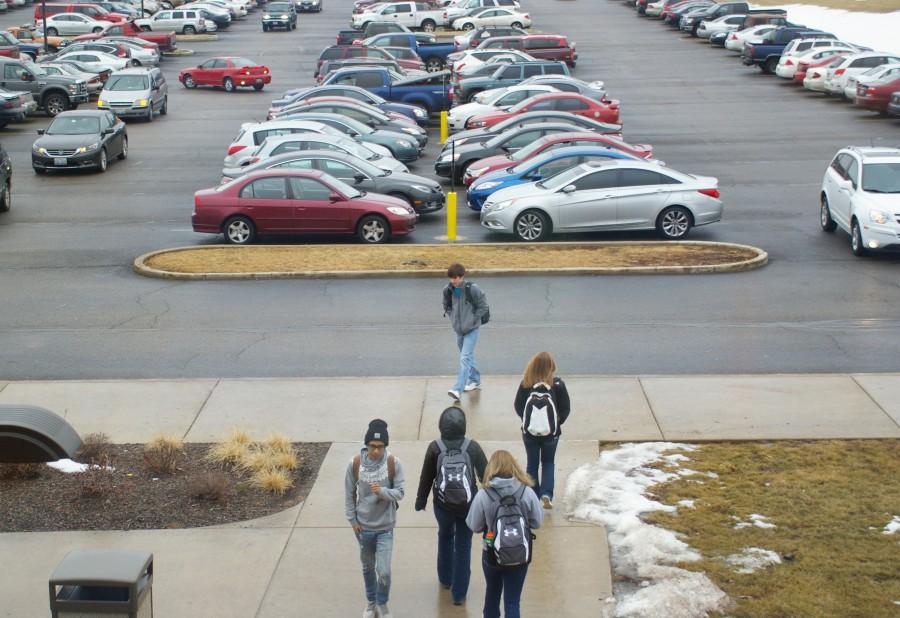Key to boosting enrollment; wooing older students, workers
IVCC officials hope to overcome slumping enrollment by making it harder to “just say no” to a community college education.
The college is reaching out to new students where they play, live and work, using new technology and old-fashioned legwork. Recognizing that keeping students is as important as recruiting them, it seeks to stem drop-outs and streamline classes-to-job routes.
“We want to make it difficult for students to say no to an IVCC career or say ‘I can’t,’ or ‘I won’t,’” said Mark Grzybowski, director of admissions and records.
Spring 2015 enrollment at the main campus appears to fall about 300 students short of 2014, from 3,500 to about 3,200. Students signed up for 1,500 fewer credit hours, about 5 percent fewer than last year, according to preliminary figures.
Though IVCC retains a steady grasp on recent high school graduates – attracting more than 30 percent of those in the area – it struggles to entice and retain older adults, Grzybowski says.
Recent enrollment fluctuations mirror high school enrollment and reflect a rosier jobs picture – in a way. Enrollments pale during robust economies and surge when the economy sours. Economic conditions force potential students – especially those in the prime family-raising, wage-earning years – to decide between work and paycheck or school and the investment of time and money to train for better jobs and higher paychecks.
IVCC is not alone. Of the state’s 39 community colleges, 31 saw their enrollments slip, said Fran Brolley, director of community relations and development. After cresting in 2009-2010, community college enrollment receded on the wave of declining high school populations and as federal funding dried up for retraining programs.
IVCC enrollment of those ages 18-20 crept up a notch in 2014 after declining in the previous three years, while enrollment of students ages 31-60 continued to decline, figures show.
Lower enrollment means fewer class sections available and more part-time staff and faculty, which could translate into longer lines to register, see a counselor or financial aid officer, or use the Learning Commons, Grzybowski said.
Enrollment also declined at the satellite campus Ottawa Center, which saw about half the students it had two years ago. The college and the city of Ottawa just renewed a five-year lease on the facility.
“No matter how well we promote the site, we still hear that people don’t realize it’s there,” Grzybowski said. Yet the satellite attracts flocks of people at Express Registration and outshines the home campus in generating credit hours, he added.
The satellite’s selection of classes is restricted by limited lab space and difficulty in finding qualified part-time faculty, Gryzbowski said, but he remains confident in its potential. “Enrollment is cyclical: as it rebounds here, it will rebound there as well.”
IVCC is committed to the satellite and couldn’t find a better partner than the city of Ottawa, Brolley agreed.
Grzybowski doesn’t believe recent tuition increases are dampening enthusiasm. “I think we’re priced fairly for our market, and that we’ve developed enough programs and financial aid options to balance out tuition increases,” he said. He also does not anticipate large tuition increases in the future.
He says he’s “optimistic for the future, but disappointed … no, deflated … for the present. We’re trying all these initiatives, but could we do more?” he wonders.
Among the incentives:
• Programs that fast-track to careers and build skills in months rather than years, and partnerships with industries that embrace that potential labor pool.
• Relaxed registration deadlines, which paid off again when the first three days of the spring term found nearly 200 new students waiting to see counselors. Last fall’s late registrants stuck with their studies and performed as well as students who registered by the regular deadline.
• Retention of at-risk students by following their progress and instantly supplying counseling, encouragement and other assistance if they start to struggle. The program, piloted last fall, could eventually be expanded campus-wide.
• Regular presence on social media sites such as Facebook, Twitter and Pinterest because “you have to go where potential students are, and (social media) is where they’re at,” Grzybowski said. By next fall, current students might even register through a mobile app that presently connects them to their campus accounts.
• Raising awareness among Hispanics through Spanish-language radio ads.

